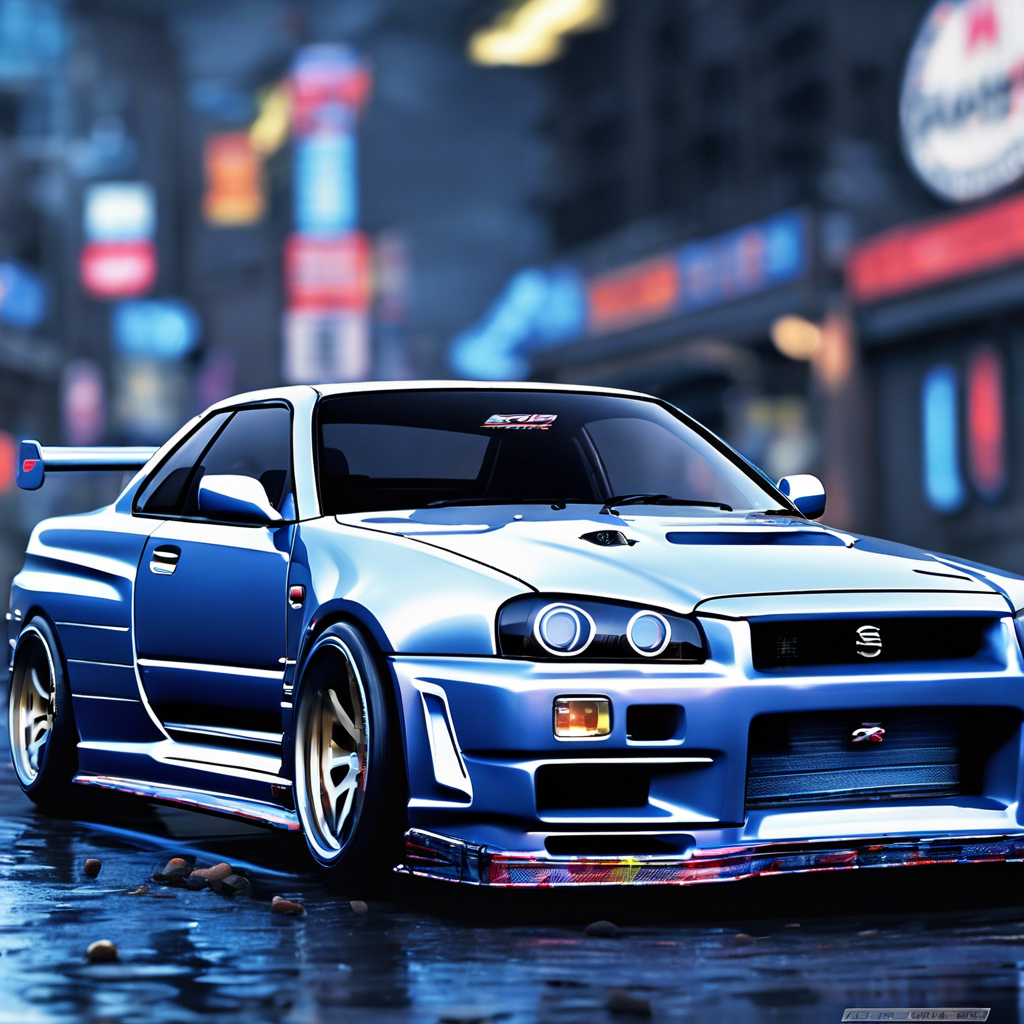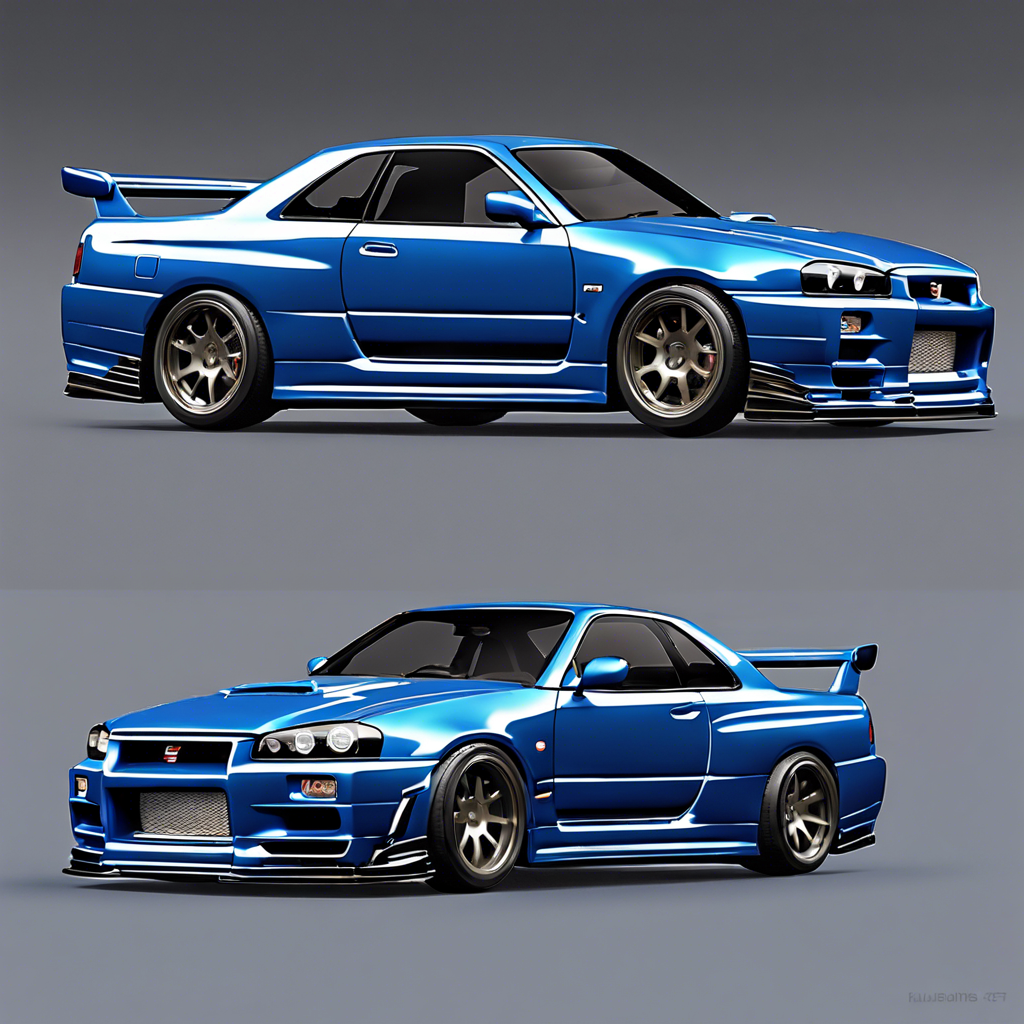In the world of automotive enthusiasts and tuning aficionados, few names evoke as much reverence and nostalgia as the Nissan R34 Skyline GT-R. Launched in the late 1990s, the R34 quickly established itself as a hallmark of performance, innovation, and cultural significance. This blog post will explore the intricate details that contribute to the R34’s status as a legendary vehicle, delving into its design, engineering, performance, and the enduring legacy it has carved in the automotive landscape.

A Brief History of the Nissan Skyline
The Nissan Skyline lineage dates back to the 1950s, but the R34 GT-R that debuted in 1999 is what solidified its legendary status. The Skyline GT-R moniker was first introduced in 1969, but it wasn’t until the arrival of the R32 in the late 1980s and the subsequent R33 that the GT-R name became synonymous with exhilarating performance. The R34, which succeeded the R33, was the culmination of Nissan’s engineering prowess and a response to the growing competition in the sports car market.
Design and Aesthetics
One of the defining traits of the Nissan R34 is its iconic design. The R34 features an aggressive yet elegant exterior that embodies raw performance while maintaining an air of sophistication. The muscular stance, prominent front grille, and distinctive four-round taillights have become hallmarks of the R34 design.
Designed with aerodynamics in mind, the R34’s body contours are not merely for aesthetic appeal; they serve a functional purpose by enhancing downforce and stability at higher speeds. The car’s profile is characterized by a long hood and a compact rear, emphasizing its sporty nature. The use of lightweight materials, such as aluminum for the hood, not only contributed to the car’s overall weight savings but also improved handling dynamics.
Engineering Excellence
At the heart of the Nissan R34 Skyline GT-R is the legendary RB26DETT engine – a 2.6-liter inline-six turbocharged powerhouse that has captivated drivers and tuners alike. Producing approximately 280 horsepower and 368 Nm of torque, the RB26 engine was known for its immense tuning potential. The R34 was equipped with a sophisticated dual overhead cam (DOHC) design, featuring a robust cast-iron block and an aluminum cylinder head. This foundation provided an ideal platform for tuners looking to extract more power, leading to a vibrant aftermarket culture surrounding the R34.
Technological Innovations
Nissan outfitted the R34 with a range of cutting-edge technologies that set it apart from its contemporaries. One of the most notable was the ATTESA E-TS (Advanced Total Traction Engineering System for All-Terrain) all-wheel-drive system. This system allowed for intelligent distribution of power between the front and rear wheels, providing exceptional grip and stability, particularly in challenging driving conditions. Coupled with the Super-HICAS (High-Performance Steering) system, which enabled the rear wheels to turn slightly in the opposite direction at low speeds, the R34 delivered unparalleled steering responsiveness and maneuverability.
Additionally, the R34 featured an advanced multi-link suspension system, which allowed for greater wheel control and improved ride quality. The combination of these technologies contributed to the R34’s reputation as a well-balanced vehicle that instilled confidence in drivers.
Performance and Driving Experience
On the track or the open road, the Nissan R34 GT-R demonstrated remarkable performance that belied its age. With a 0-60 mph time of around 5.6 seconds and a top speed of roughly 165 mph, the R34 was not only competitive against its contemporaries but also stood out in a renewed era of supercars. However, the true magic of the R34 is best experienced in the curves, where its advanced engineering allowed for thrilling dynamics and feedback.
Driving an R34 is an immersive experience. The combination of the RB26 engine’s roar, the precision of the six-speed Getrag transmission, and the tactile feedback from the steering wheel creates a bond between driver and machine. The feeling of being connected to the road is accentuated by the R34’s rear-wheel-drive setup, allowing for engaging driving dynamics, whether on a racetrack or twisting mountain roads.
Cultural Impact and Legacy
The legacy of the Nissan R34 extends far beyond the realm of performance. Its appearance in iconic films and video games, particularly the Fast & Furious franchise and the Gran Turismo series, introduced the vehicle to a broader audience and solidified its icon status in popular culture. The car became a symbol of tuning culture, inspiring countless enthusiasts to personalize and modify their own Skylines.
Even years after its production ended in 2002, the Nissan R34 GT-R continues to command respect and admiration. Classic car collectors and performance enthusiasts seek out the R34, recognizing it not just as a vehicle, but as a cultural artifact representing a significant era in automotive history. The R34’s influence continues to be felt in modern Nissan designs, as well as in the performance tuning community, where enthusiasts strive to replicate or improve upon its engineering brilliance.
Conclusion
The Nissan R34 Skyline GT-R is more than just a sports car; it is a legend woven into the fabric of automotive history. From its meticulous engineering and advanced technology to its striking design and lasting cultural impact, the R34 remains a benchmark for performance vehicles. As the automotive industry continues to evolve, the legacy of the R34 will undoubtedly endure, reminding us of an era when driving was not just a means to an end, but an exhilarating experience in its own right. The R34 continues to inspire the dreams of petrolheads, and its status as a king of the streets remains unchallenged—a testament to Nissan’s engineering excellence and the enduring passion of automotive enthusiasts around the world.
